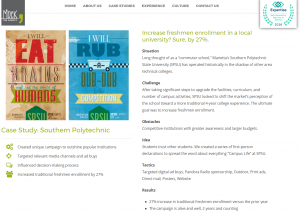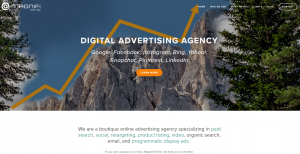If you have ever spoken to an agency new business consultant, they would all tell you that consistency is key. Our team likes to compare agency new business to a gym membership. It’s easy to get started every new year with a new gym, the excitement of having a six pack by summer sounds appealing. Inevitably, without a personal trainer, we slow down how often we go to the gym, or we put everything on hold (just for a few months of course). Those temporary pauses in our gym membership (or business development) are absolute momentum killers and prevent us from having the abs and revenue of our dreams.
So how do we become more consistent and what parts of our business development process to we need to be more consistent about? We put together a quick list to help ensure that you’re still moving the new business process forward in the middle of the year.
- Content – Mirren/RSW recently published a report that showed Content Development tools being used by 87% of agencies, an increase in 4% over last year. Clearly agencies have caught on to the idea that content is king in driving new business over the year. What will separate your agency from the others this year? Creating content during the summer months. Look at any agency blog or insight page and you will see large holes very often during the summer months when they should be dramatically adding new, insightful content. 3,500 words on your site every month should be your minimum goal, are you there?
- Conversations – In the sales world, we love counting calls or emails and judging whether or not we have had enough activity to generate revenue. My challenge to any new business person is that they need to count conversations. We aren’t paid based on effort, but results, so get who cares how many times you pick up the phone or send a cold email. All that matters is how many qualified new business conversations we can drive, especially at this time of the year when most of your competition is slowing down and only “going to the gym” once a day. Now is the time for you to be the vocal agency that is consistently reaching out via phone or email to drive those conversations.
- Planning – For an agency that consistently has to create and manage long term campaigns and plans for our clients, very often we have trouble ourselves creating a long term plan for our new business efforts. This means that we need to prioritize new business efforts and create a plan that we are going to consistently execute, no matter what is going on around the agency. Too often we see new business take a backseat as soon as we begin to either have success or even struggles. Anything gets in our way, we throw our plan out the window and focus on other items. It is the biggest mistake agencies make every day in that it kills all your momentum and when you finally decide three months later to pick up your efforts again, you are starting back over at ground floor.
Recently, our CEO Dave Currie spoke with the AMI on consistency and this quote really stuck out:
“I haven’t seen a successful agency that doesn’t treat itself as its most important client.” – @NewBizDingo
If you are going to be successful and treat yourself as your most important client, that doesn’t mean you just turn on and off your new business program randomly throughout the year. It means that every day you come in with a purpose to create content, drive more qualified conversations, and live by the plan you created on the first day of the year. If you can retain that focus all year long, the new revenue will take care of itself.















